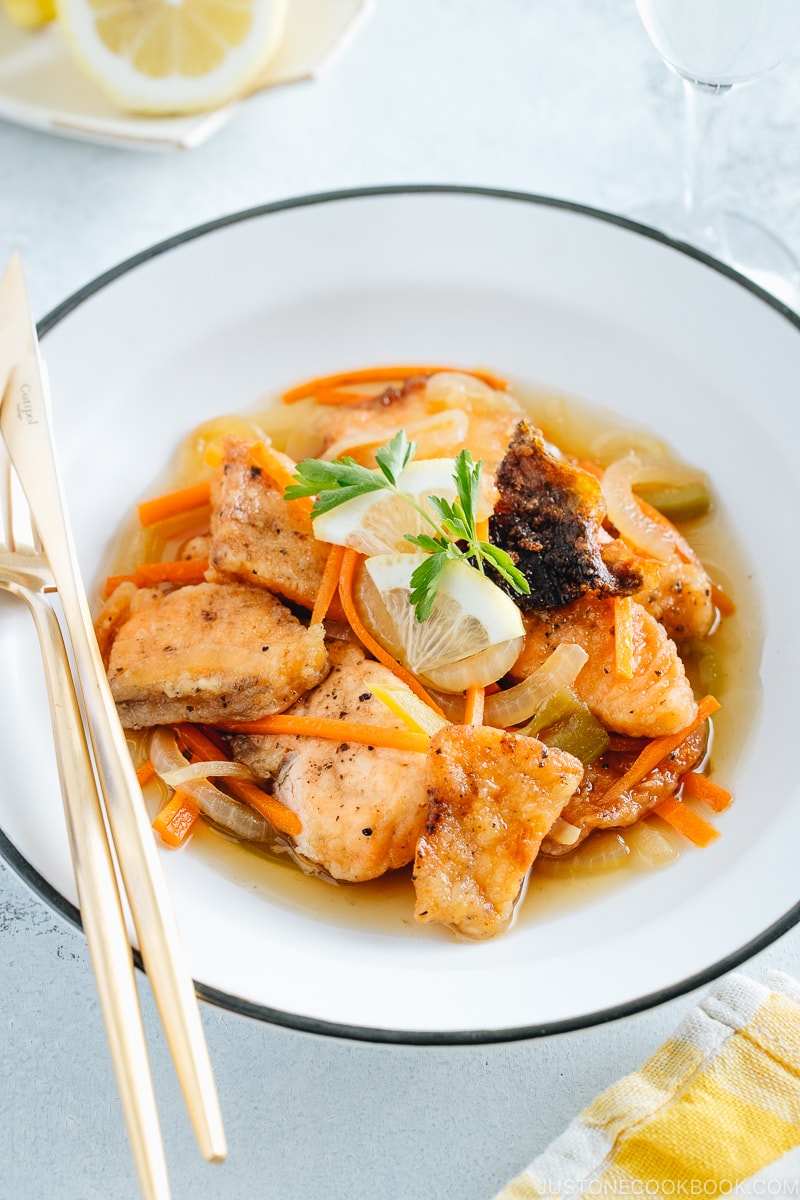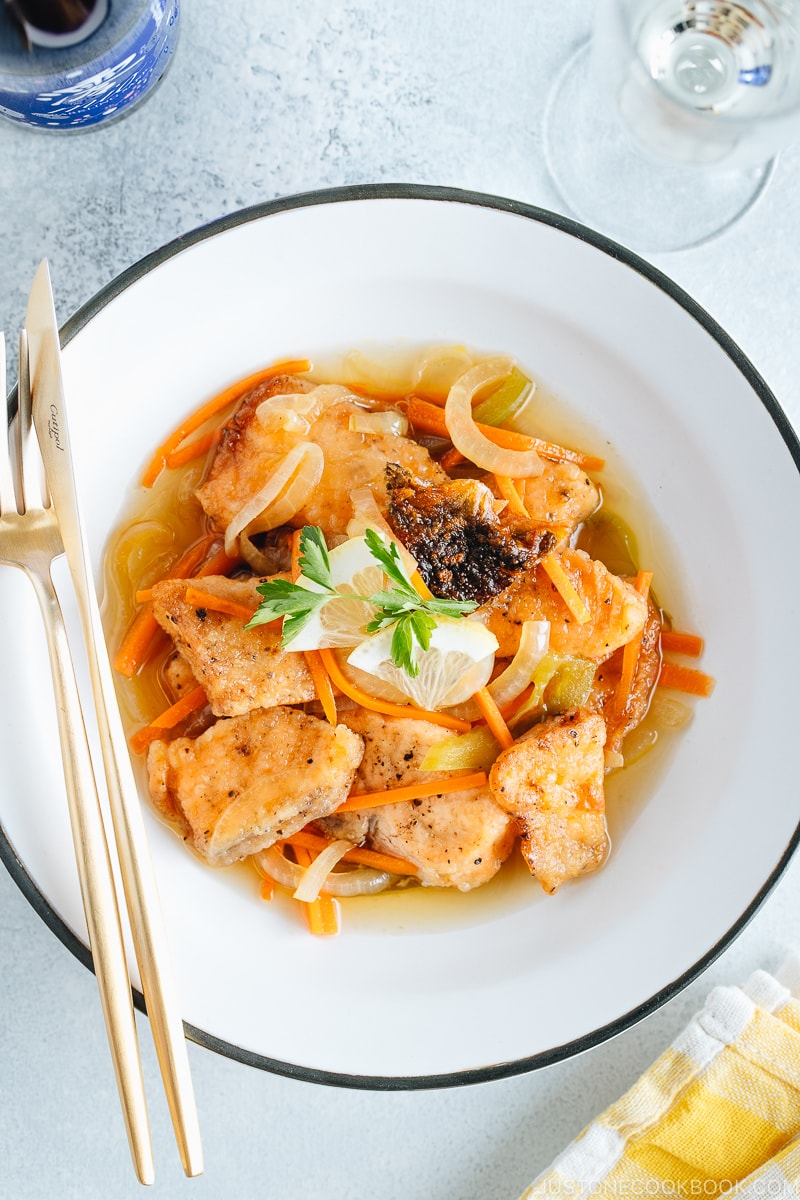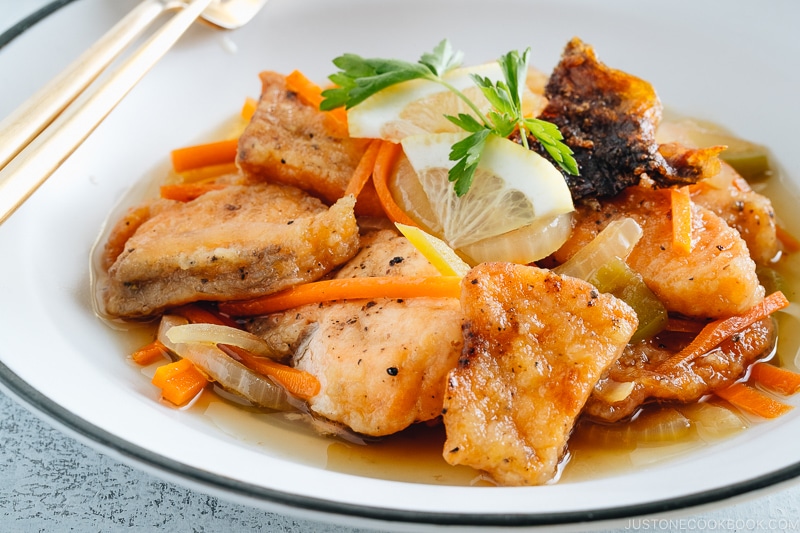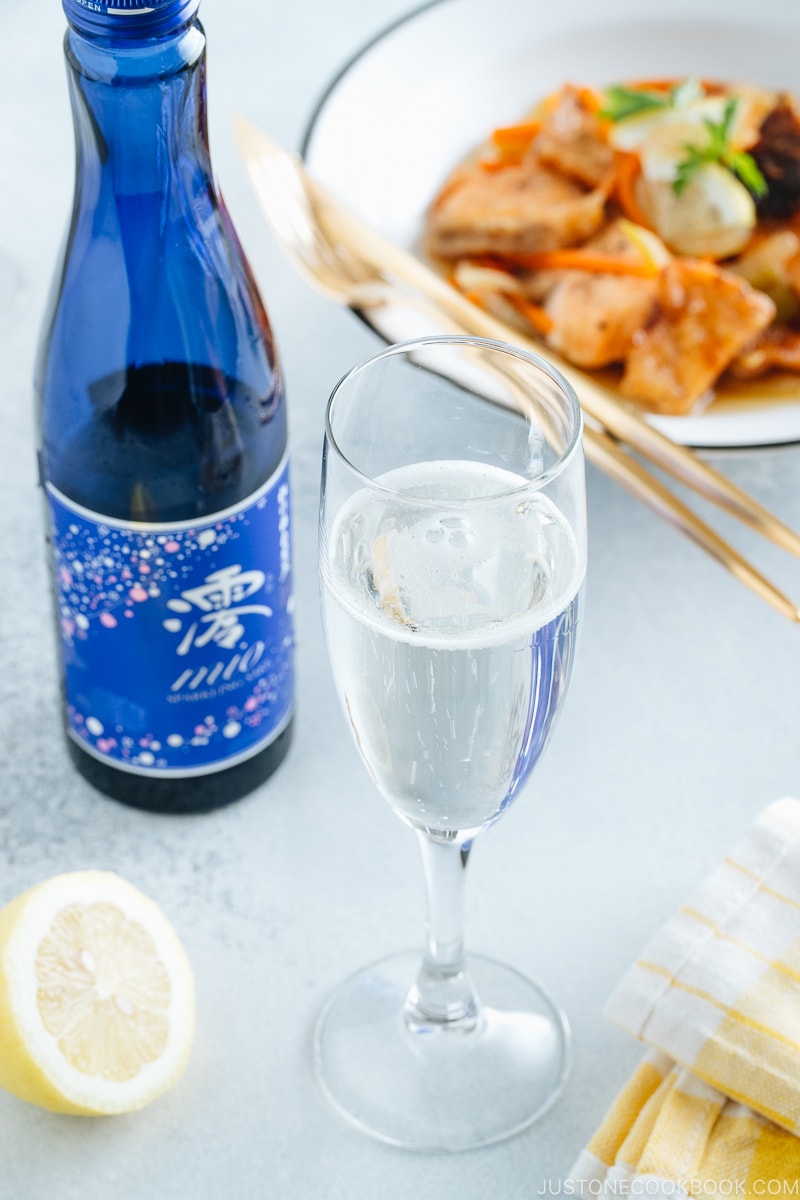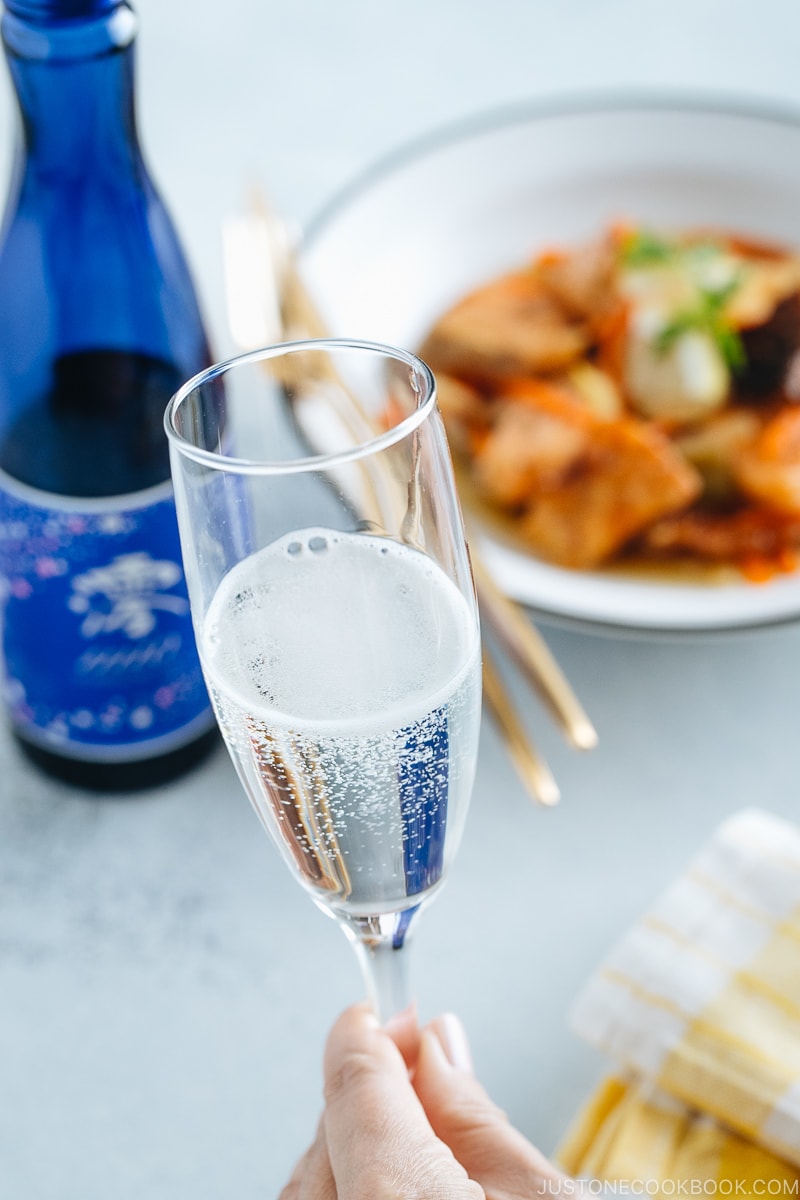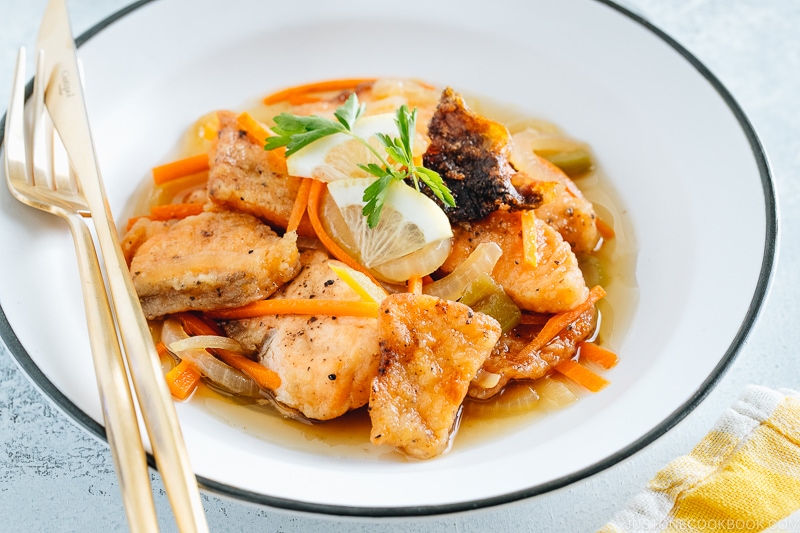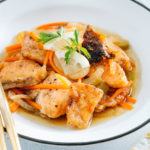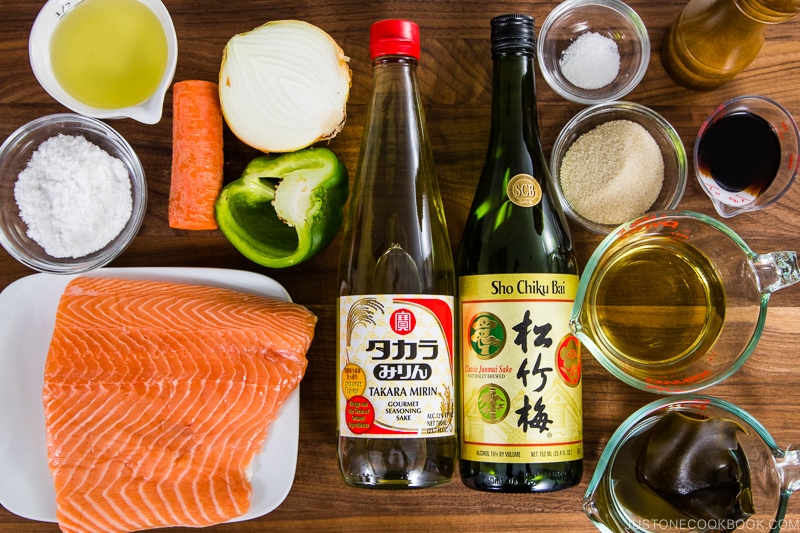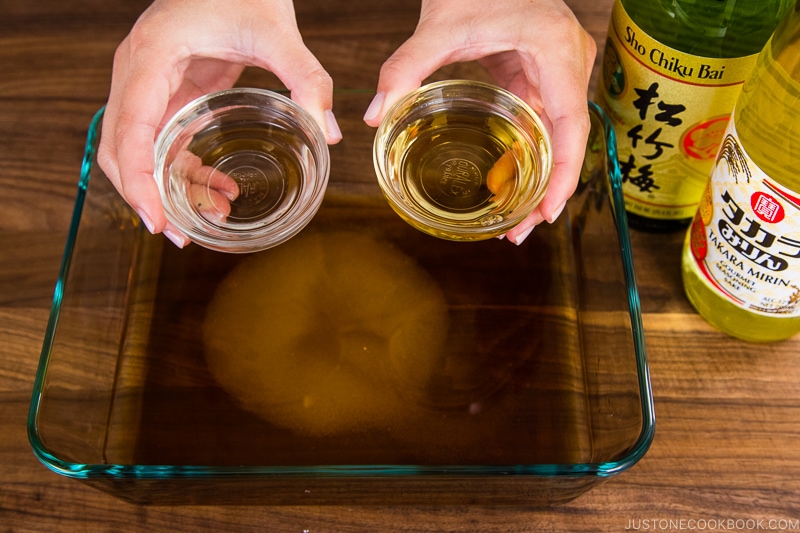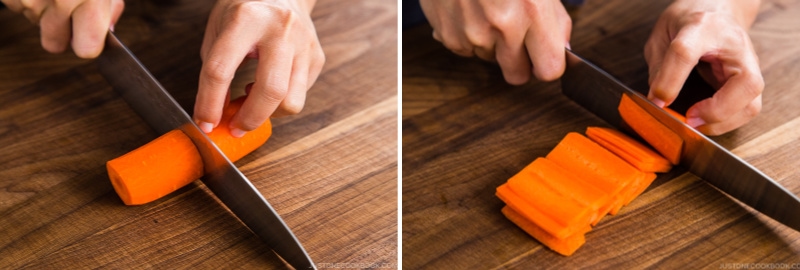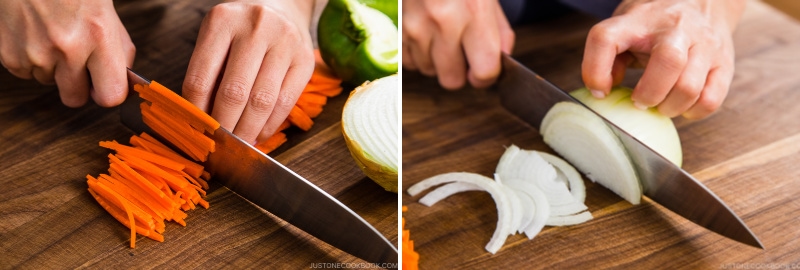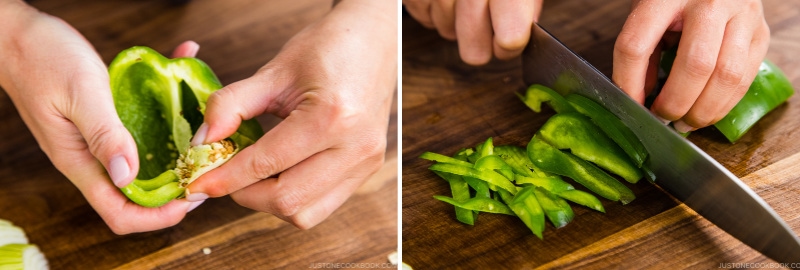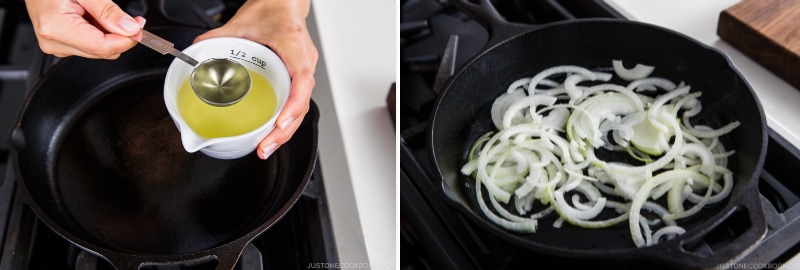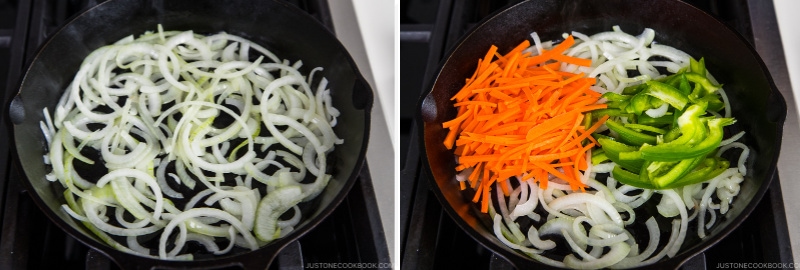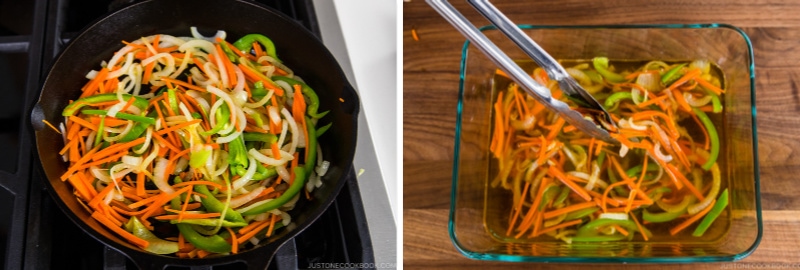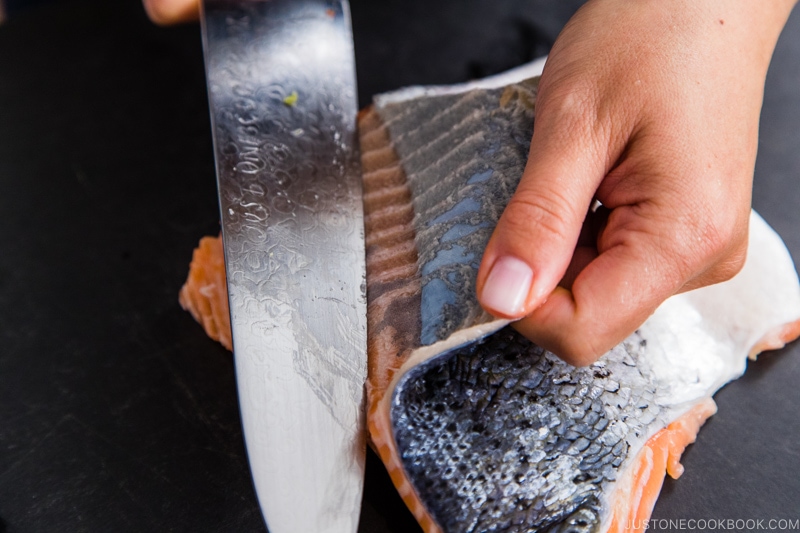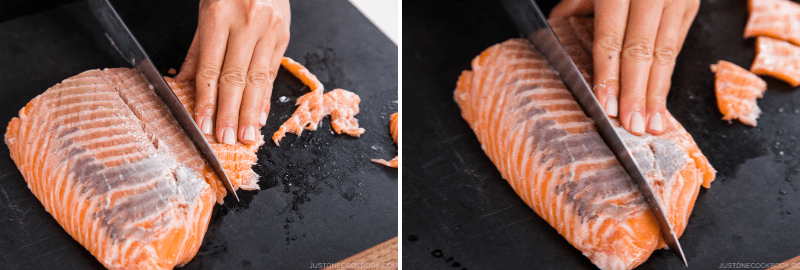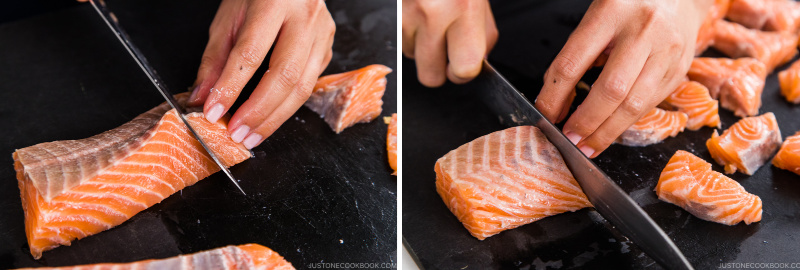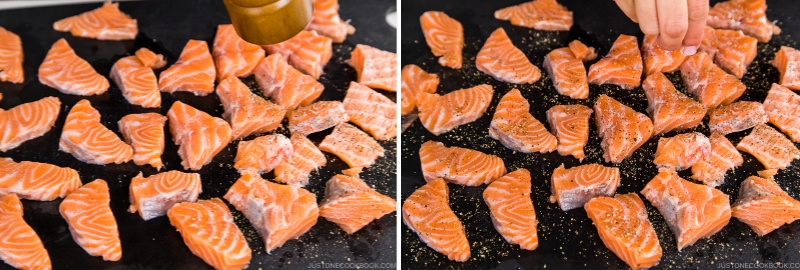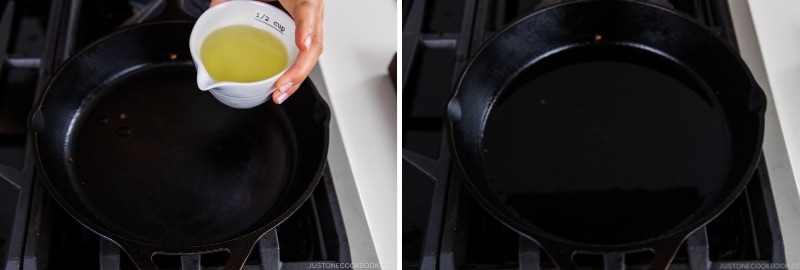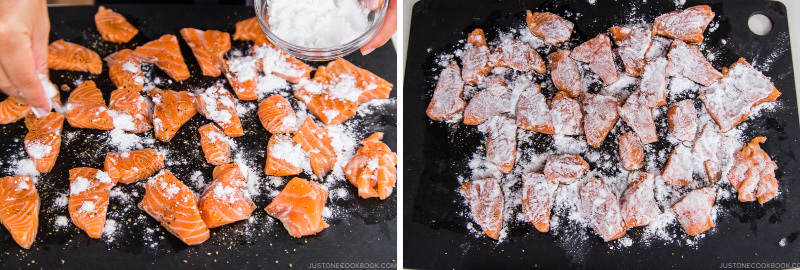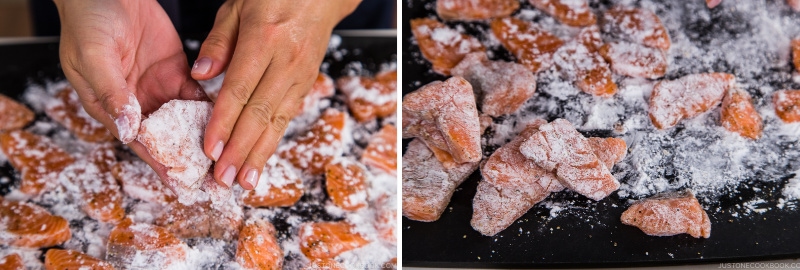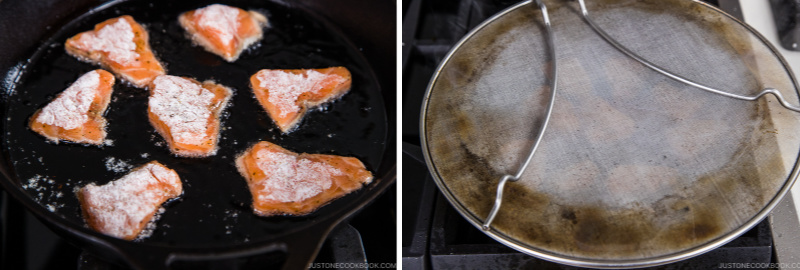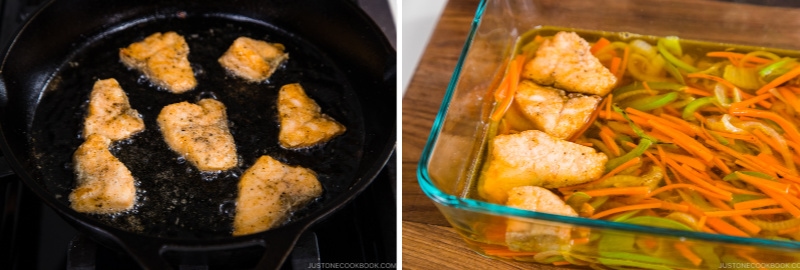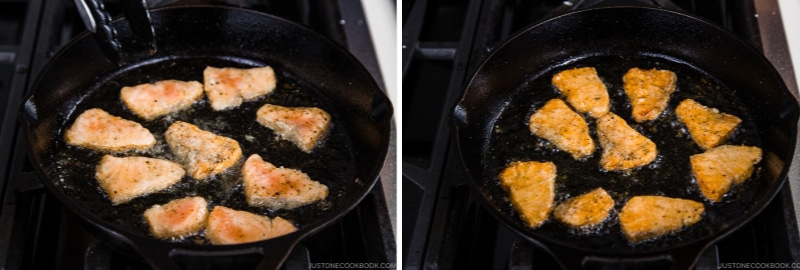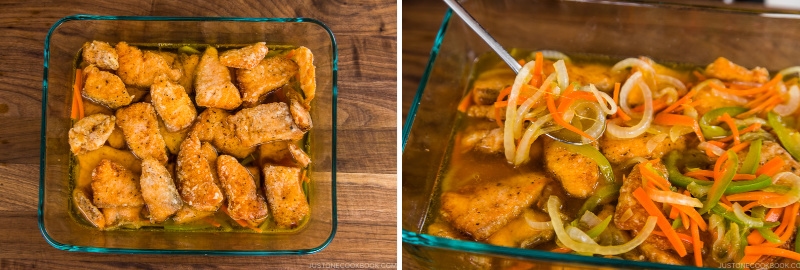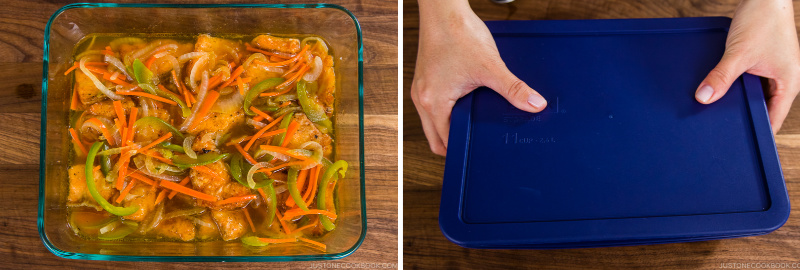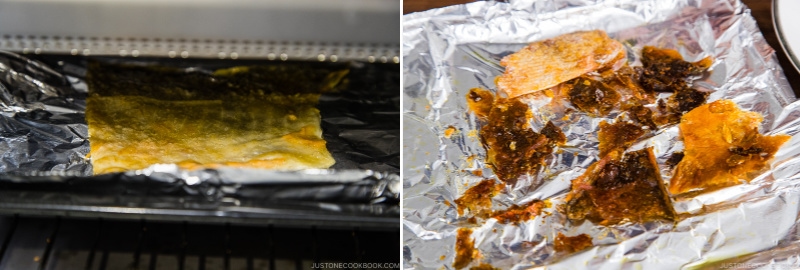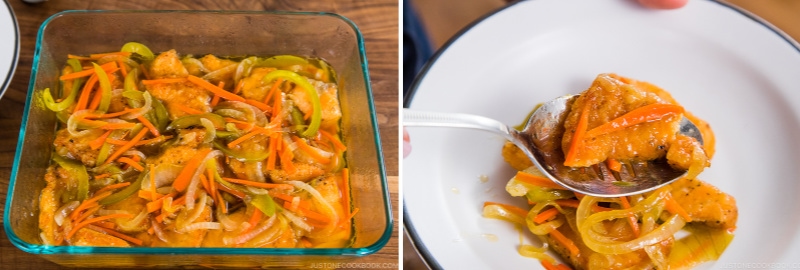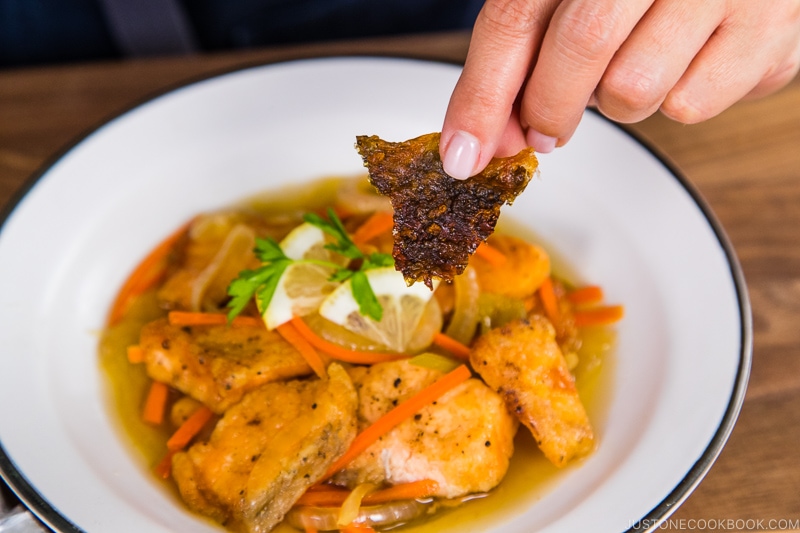When the weather is warm outside, I crave a meal with a simple and refreshing taste. This Salmon Nanbanzuke (鮭の南蛮漬け) is easily one of my favorite seafood dishes to enjoy. Nanbanzuke may not be on your radar when comes to Japanese food, but it is actually a popular dish enjoyed both at home and in restaurants in Japan. Here, the salmon is first fried then marinated in a tangy sauce along with colorful julienned vegetables. It’s then chilled in the refrigerator and served cold. The result is light and incredibly appetizing.
What is Nanbanzuke?
Nanban (南蛮) literary means “southern barbarian(s)” in kango (漢語), Chinese loanwords in the Japanese language. It originally referred to the people of South Asia and Southeast Asia. In Japan, it was used for the Portuguese, who first arrived in 1543, and later for other Europeans who came to visit later in the 16th to 17th century. The word also refers to something foreign and exotic. This includes nanban kashi (南蛮菓子, foreign sweets) like castella cake. Another example is food with exotic spices, sauces like chicken nanban (fried chicken with tartar sauce), or marinades like salmon nanbanzuke, with zuke meaning “being soaked.” Nanbanzuke is essentially the Japanese interpretation of escabeche, a fried fish dish that’s marinated in a vinegar-based sauce in Mediterranean and Latin American cuisines. Instead of cider vinegar and spices, we enliven the fish or meat with marinade ingredients from the Japanese pantry: Dashi, mirin, sake, and rice vinegar. This unique preparation helps preserve the fish so that it lasts for days in the fridge.
Ingredients for Marinated Fried Salmon
salmon fillet – see the recipe card for instructions on how to remove the skin; you can also crisp it for an optional garnish kosher salt – I use Diamond Crystal brand freshly ground black pepper potato starch or cornstarch – for coating the salmon carrot, onion, and green bell pepper – I use Japanese piman bell pepper neutral oil – for cooking the vegetables and frying salmon dashi (Japanese soup stock) – you can use awase dashi, dashi packet or powder, or vegan dashi rice vinegar (unseasoned) usukuchi (light-colored) soy sauce – you can use regular soy sauce, but the final color of the dish will be darker sake – I used Sho Chiku Bai Classic Junmai Sake mirin – I used Takara Mirin sugar lemon slices and parsley – optional; for garnish
Variations on Salmon Nanbanzuke
Besides salmon, you can also make nanbanzuke with these popular ingredients:
aji (horse mackerel) saba (mackerel) shishamo (saltwater smelt) wakasagi (Japanese pond smelt) chicken
How To Make Salmon Nanbanzuke
You can keep the dish in the refrigerator for up to 5–6 days.
3 Cooking Tips for Delicious Salmon Nanbanzuke
1. Coat the salmon with potato starch or flour.
This crucial step helps to seal in the umami and juice in the fish. During frying, this coating acts as a protective shield to prevent the flesh from breaking apart. If you don’t have potato starch, you can substitute cornstarch or wheat flour, but don’t skip the coating. You may remember that I use the same technique for Teriyaki Salmon and Miso Butter Salmon.
2. Adjust the vinaigrette to your liking.
Everyone has a slightly different level of preference when it comes to tartness in food. I tested different versions of nanban marinade with my family because each of them has their own comfort level with sourness. So, use my recipe as a guide. Have a taste and adjust the ratio until the vinaigrette tastes right to your liking or for the season. For example, I like to use a bit more vinegar in the summertime for extra tanginess. Speaking of vinegar, most Japanese recipes use rice vinegar (米酢). It is milder in taste and not as strong as other kinds of vinegar. I highly recommend getting a bottle of rice vinegar if you also plan to make Sushi Rice (for making sushi), Cucumber Salad, and Japanese dressings.
3. Marinate the fried salmon while it’s hot.
The most important technique for delicious nanbanzuke is to marinate the fried salmon as soon as it’s out of the oil. Remove the excess oil by shaking it off, then dunk the salmon into the marinade immediately. The hot salmon absorbs the most flavor when it’s just fried.
Pairing with MIO Sparkling Sake
For this marinated fried salmon with vegetables dish, we paired it with Sho Chiku Bai Shirakabegura MIO Sparkling Sake. The sparkling sake is similar to a fruit cider, with flavors of apple, pear, and summer fruits. The sweetness and fruitiness of the sake match the vinaigrette really well and the tiny bubbles cleanse the palate so you’re always ready for the next bite. We love this sparkling sake with a summer meal like salmon nanbanzuke. Cheers! I hope this easy salmon dish will be another favorite of yours!
Other Salmon Dishes You May Enjoy
Teriyaki Salmon Salmon Fried Rice Miso Butter Salmon Salmon in Foil Baked Crispy Salmon Sanpeijiru (Salmon Miso Soup)
Wish to learn more about Japanese cooking? Sign up for our free newsletter to receive cooking tips & recipe updates! And stay in touch with me on Facebook, Pinterest, YouTube, and Instagram.
